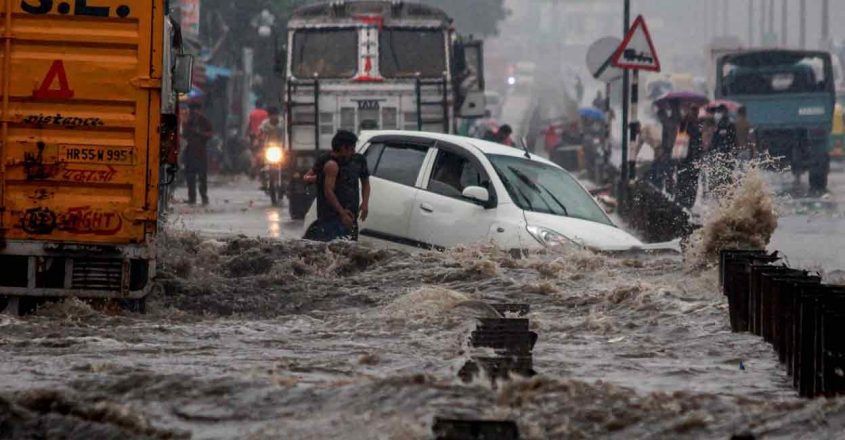In an unprecedented weather event, Delhi witnessed record-breaking rainfall between Wednesday and Thursday morning.
The India Meteorological Department (IMD) recorded 147mm of rain in the eastern parts of the capital, marking the highest single-day total for July in 14 years. This torrential downpour accounted for more than half of the city’s monthly rainfall, causing significant disruptions across the region.
The heavy rainfall overwhelmed Delhi’s drainage systems, leading to widespread waterlogging and flash floods.
The situation is part of a larger pattern of severe weather affecting northern India, where infrastructure has been heavily damaged. The IMD has issued a warning for the rest of the week, predicting isolated and “extremely heavy rain,” with potential rainfall totals exceeding 200mm in some areas.
As a precaution, several schools and offices have been closed, and authorities are urging residents to remain vigilant.

In Kerala, the situation is even more dire. The state has been hit by an estimated 572mm of rain over the past 48 hours, triggering landslides that have resulted in tragic losses.
At least 194 people have lost their lives, and nearly 200 remain missing. In response, more than 8,300 people have been evacuated to government-run relief camps. The IMD’s highest-level warning remains in effect, signaling that more extreme weather could be on the way.
Meanwhile, Europe is grappling with its weather challenges. After a rainy start to the Paris Olympics, the French capital is now experiencing intense heatwave conditions.
On Tuesday, temperatures soared to 36°C, creating challenging conditions for both athletes and spectators. The high humidity and ensuing thunderstorms have added to the discomfort.
In response to the heat, Olympic organizers have implemented various measures to protect participants. For instance, tennis players are allowed 10-minute breaks between certain sets, during which they can rest, hydrate, and cool down.
To minimize the event’s carbon footprint, the Olympic Village has opted for heat-reducing measures like underfloor cooling and insulation instead of traditional air-conditioning. However, some countries, including the US and Australia, have been permitted to install their air-conditioning units to ensure the well-being of their athletes.
As extreme weather events continue to impact different parts of the world, both authorities and residents are being called to adapt and prepare for the challenges ahead.

